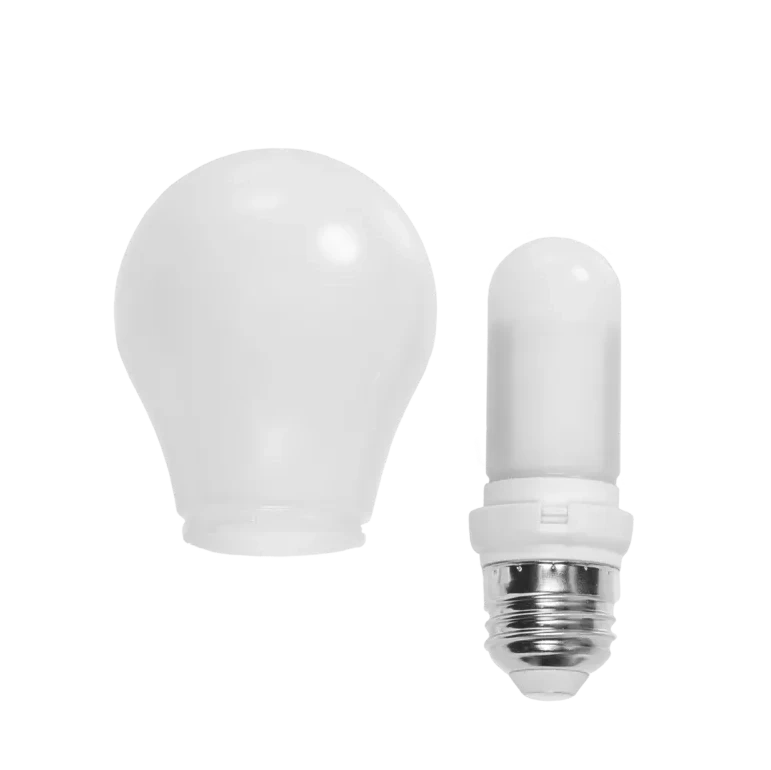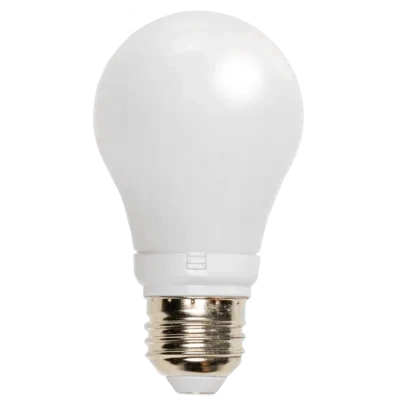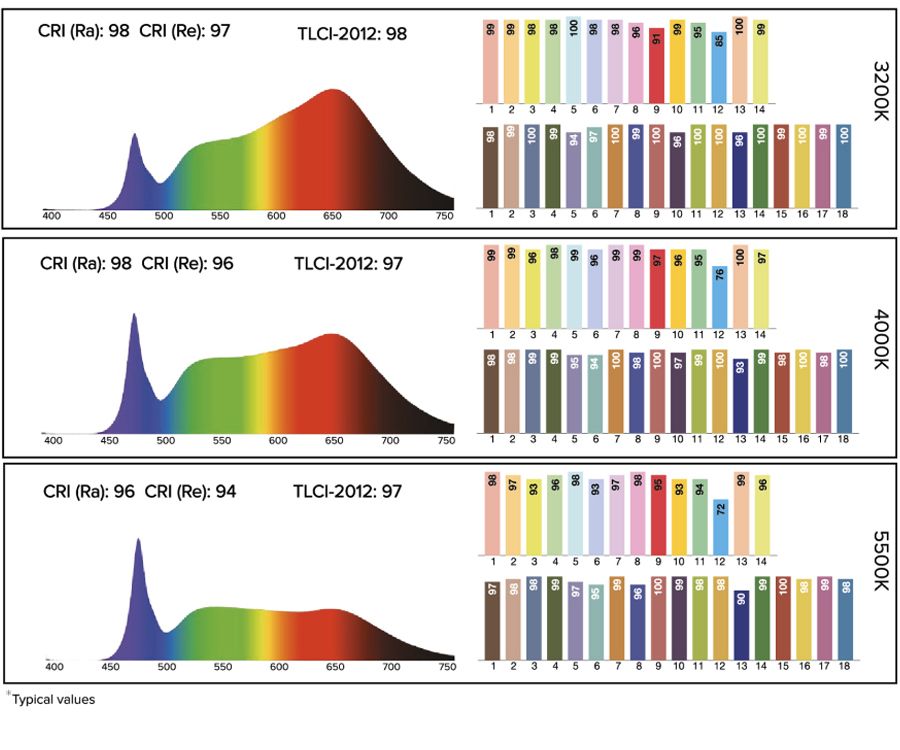

Looks like a traditional bulb, works like a professional luminaire. Designed to meet filmmakers’ requirements for practicals on camera and to discover endless creative possibilities without disrupting event planners’ workflow. From delivering perfect skin tones and the same controls as any other wireless DMX fixture to intimate gatherings to grand events, LunaBulb offers intuitive control via your smart device, remote, or console. Let your creativity shine wherever there’s a lamp socket.
One Bulb, Two Shapes
Thanks to the LunaBulb’s classic look, your lighting blends seamlessly into any setting. It offers the familiar look and feel of a classic, frosted incandescent bulb or a bright and thin hotspot, while performingwith the same efficiency amd power of a professional full-color luminaire.
Matches any Color
Equipped with the revolutionary Titan LED Engine, the LunaBulb has a wide color temperature range and excellent color rendition to maximize flexibility and precision when mixing different light sources. Each bulb is calibrated during the manufacturing process to match the needs of advanced camera sensors.
Smooth Dimming
Having flicker-free, in-sync output regulation and an impressive color consistency for the whole dimming range. LunaBulb qualifies both for subtle practical lighting and complex mapping effects. Unlike classic Tungsten alternatives. LunaBulb does not change the color temperature while dimming down.
SPECIFICATIONS
|
Order Code |
FP7-E26, FP7-E27, FP7-B22 |
|---|---|
|
LED Engine |
Titan LED Engine |
|
Colors |
RGBMintAmber |
|
Total LED Power |
4.25 W |
|
LED Power Draw |
3.3 W |
|
CRI (Ra) / TLCI 3200-6500K* |
≥96 |
|
Strobe |
0 – 25 Hertz |
|
Pixels |
1 |
|
AC Input |
FP7-E26: 100-120 VAC FP7-E27: 100-240 VAC FP7-B22: 100-240 VAC |
|
AC Connector |
E26 / E27 / B22 |
|
Power Consumption (max.) |
4.25 W |
|
Wired DMX |
N/A |
|
CRMX Receiver |
Built-in |
|
Bluetooth Bridge BTB |
Built-in |
|
Wireless Protocols |
CRMX, UHF, Bluetooth, WiFi |
|
Wireless Range |
CRMX / UHF up to 100 m / 110 yds Bluetooth up to 3 m / 3.3 yds |
|
RDM Support |
Wireless |
|
Infrared Control |
Yes |
|
ControlSync |
No |
|
TouchSlider |
No |
|
Housing Material |
Metal & Polycarbonate |
|
IP Rating |
IP44 – Depending on socket used |
|
Ambient Operating Temperature |
0 – 40°C / 32 – 104 °F |
|
Weight |
0.081 kg / 0.179 lbs |
|
Dimensions Classic Look (Ø x H) |
Ø 55 mm x 99 mm (E26) Ø 55 mm x 100 mm (E27) Ø 55 mm x 98.6 mm (B22) |
|
Dimensions Slim Look (Ø x H) |
Ø 27 mm / Ø 33 mm x 91.6 mm (E26) Ø 27 mm / Ø 33 mm x 92.6 mm (E27) Ø 27 mm / Ø 33 mm x 91.2 mm (B22) |
|
Mounting Options |
E26 / E27 / B22 Socket |
What's in the Box
- 1 x LunaBulb (FP7)
Available versions
- LunaBulb with E26 Thread (FP7-E26)
- LunaBulb with E27 Thread (FP7-E27)
- LunaBulb with B22 Thread (FP7-B22)
RF Characteristics
RF Characteristics
|
Wireless Modules |
ModulationModulation |
ERP (Transmitter) |
Channel Count |
|---|---|---|---|
|
EU: UHF***(863-870 MHz) |
FHSS |
<25 mW |
47 |
|
USA: UHF (917-922.20 MHz) |
FHSS |
<25 mW |
53 |
|
AUS: UHF (922.30-927.50 MHz) |
FHSS |
<25 mW |
53 |
|
SGP: UHF (920.50-924.50 MHz) |
FHSS |
<25 mW |
41 |
|
KOR: UHF (917.9-921.5 MHz) |
FHSS |
<25 mW |
10 |
|
RUS: UHF (868.75-869.12 MHz) |
FHSS |
<25 mW |
6 |
|
JPN: UHF (922.80-926.40 MHz) |
FHSS |
<25 mW |
19 |
|
CRMX (2402-2480 MHz) |
FHSS |
– |
79 |
|
Bluetooth 5.0 LE (2402-2480 MHz) |
FHSS |
10mW (BLE) |
40 |
|
WiFi (2412-2472 MHz) |
DSSS, OFDM |
<100 mW |
13 |
|
Frequency range in MHz1) |
Maximum equivalent radiant power (ERP) |
Additional parameters / frequency access and interference mitigation techniques |
|---|---|---|
|
865 – 868 |
25 mW |
Requirements for frequency access and mitigation techniques3) Alternatively, a maximum duty cycle2) of 1% can be used. |
|
868,0 – 868,6 |
25 mW |
Requirements for frequency access and mitigation techniques3) Alternatively, a maximum duty cycle2) of 1% can be used. |
|
868,7 – 869,2 |
25 mW |
Requirements for frequency access and mitigation techniques3) Alternatively, a maximum duty cycle2) of 0.1% can be used. |
|
869,40 – 869,65 |
500 mW |
Requirements for frequency access and mitigation techniques3) Alternatively, a maximum duty cycle2) of 10% can be used. |
|
869,7 – 870,0 |
25 mW |
Requirements for frequency access and mitigation techniques3) Alternatively, a maximum duty cycle2) of 1% can be used. |
1) The use of adjacent frequency bands within this table as a single frequency band is permitted, provided that the specific conditions for each of these adjacent frequency bands are met. 2) „duty cycle“ means the ratio of Σ(Ton)/(Tobs) expressed as a percentage, where ‚Ton‘ is the ‚on-time‘ of a single transmitting device and ‚Tobs‘ is the observation period Ton is measured in an observation frequency band (Fobs). Unless otherwise specified in this general allocation, Tobs is a continuous period of one hour and Fobs is the applicable frequency band in this general allocation (table). 3) Frequency access and interference mitigation techniques shall be used whose performance level at least meets the essential requirements of Directive 2014/53/EU or the Radio Equipment Act (FuAG). Where relevant techniques are described in harmonised standards, the references of which have been published in the Official Journal of the European Union pursuant to Directive 2014/53/EU, or parts thereof, performance shall be ensured which is at least equivalent to those techniques.




